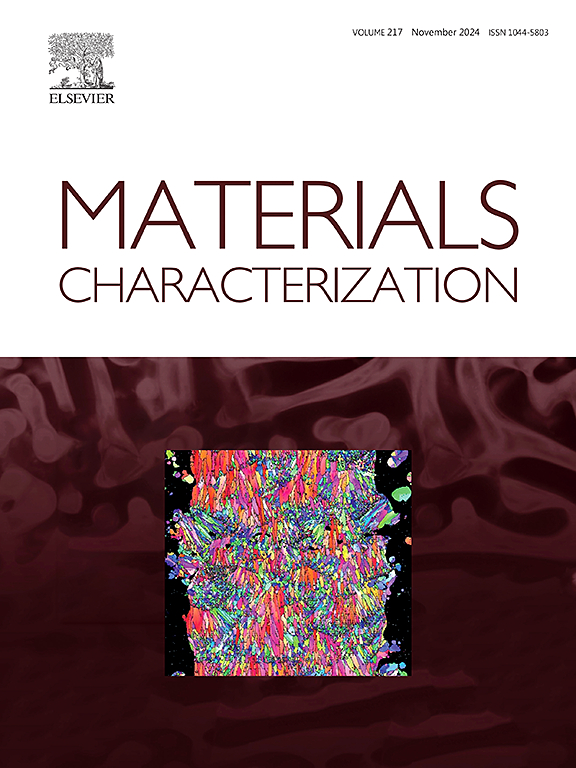A nanolaminated structure design to produce high-strength Cu alloys with enhanced electrical conductivity and thermal stability
IF 4.8
2区 材料科学
Q1 MATERIALS SCIENCE, CHARACTERIZATION & TESTING
引用次数: 0
Abstract
Nanocrystalline Cu has the merit of high strength but usually suffer from poor electrical conductivity and rapid grain coarsening, limiting its practical application. Here, we demonstrate that this challenge can be overcome by architecting a unique nanolaminated grain structure (NGS) with an ultra-thin lamellae boundary spacing of ∼55 nm, featuring pronounced Ag atoms segregation at high angle lamellae boundaries and very few defects inside the lamellae interiors, in a Cu-5wt.%Ag alloy. Benefiting from the synergistic contributions from the NGS, pronounced Ag atoms segregation at lamellae boundaries and continuous electron transport channels as well as a low electron scattering within the lamellae interiors, the resultant NGSed Cu-5wt.%Ag alloy achieves an ultrahigh tensile yield strength (YS) of 895 MPa, together with an excellent electrical conductivity of ∼83 % IACS (International Annealed Copper Standard) and a good thermal stability of 400 °C (∼0.4 Tm). The structure design strategy reported here, via nanolamellar grain structure combined with solute atoms decoration at lamellae boundaries, represents a promising approach that may be widely applicable to develop high strength, conductivity, and thermally stable nanostructured Cu-based materials for future structural and functional applications.
求助全文
约1分钟内获得全文
求助全文
来源期刊

Materials Characterization
工程技术-材料科学:表征与测试
CiteScore
7.60
自引率
8.50%
发文量
746
审稿时长
36 days
期刊介绍:
Materials Characterization features original articles and state-of-the-art reviews on theoretical and practical aspects of the structure and behaviour of materials.
The Journal focuses on all characterization techniques, including all forms of microscopy (light, electron, acoustic, etc.,) and analysis (especially microanalysis and surface analytical techniques). Developments in both this wide range of techniques and their application to the quantification of the microstructure of materials are essential facets of the Journal.
The Journal provides the Materials Scientist/Engineer with up-to-date information on many types of materials with an underlying theme of explaining the behavior of materials using novel approaches. Materials covered by the journal include:
Metals & Alloys
Ceramics
Nanomaterials
Biomedical materials
Optical materials
Composites
Natural Materials.
 求助内容:
求助内容: 应助结果提醒方式:
应助结果提醒方式:


